plantar fasciitis
Displaying items by tag: plantar fasciitis
Dr. Timothy Young, a Board-Certified Foot Surgeon, Discusses Shockwave Therapy For Stubborn Achilles Tendinitis and Plantar Fasciitis
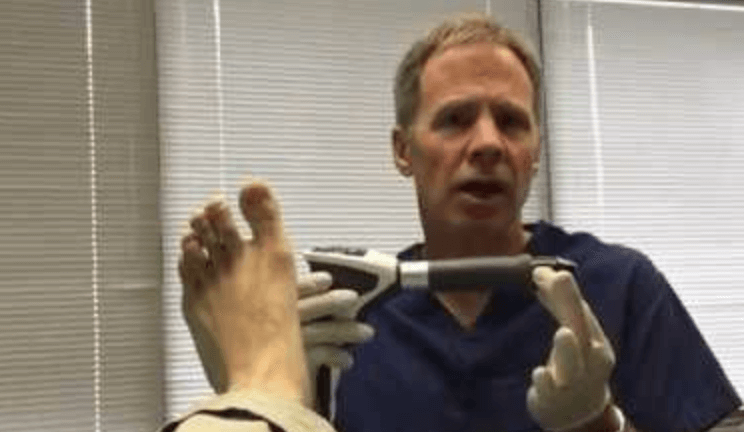
Dr. Timothy Young, a board-certified foot surgeon discusses, Shockwave therapy for stubborn Achilles tendinitis and plantar fasciitis. (EPAT)
Many of our plantar fasciitis and Achilles tendinitis patients respond well to traditional therapy. This includes appropriate gym shoes, prescription orthotics, braces, a night splint and stretching.
However, some patients have more stubborn cases. In these cases shockwave therapy is highly effective. In Dr Young's experience, this can be 80–90 percent effective for patients who have not had adequate relief with the traditional treatments. There are some cases that are so severe that we also use PRP (platelet rich plasma).
The shockwave therapy is typically done once a week for 5 treatments. There is no down time with shockwave therapy and there are no injections.
The Shockwave therapy protocol includes avoiding nonsteroidal anti-inflammatories like Aleve or Advil, avoiding icing, and taking supplemental boron - 3 mg per day and collagen. The clinical improvement after shockwave can continue to progress over 3-4 months.
Shockwave therapy is a form of regenerative medicine. The shockwave therapy itself is a fairly intense treatment and the targeted tissue benefits from the shockwave therapy with increased blood flow and increased local healing factors much like other forms of regenerative medicine. The body responds to shockwave therapy such that the local tissues respond as though there is trauma and this triggers many of the bodies own natural healing.
If you are experiencing foot or ankle pain, give us a call at 425-391-8666 or make an appointment online today.
Dr. Brandon Nelson, Board-Certified Foot and Ankle Physician and Surgeon, Discusses Heel pain and Plantar Fasciitis
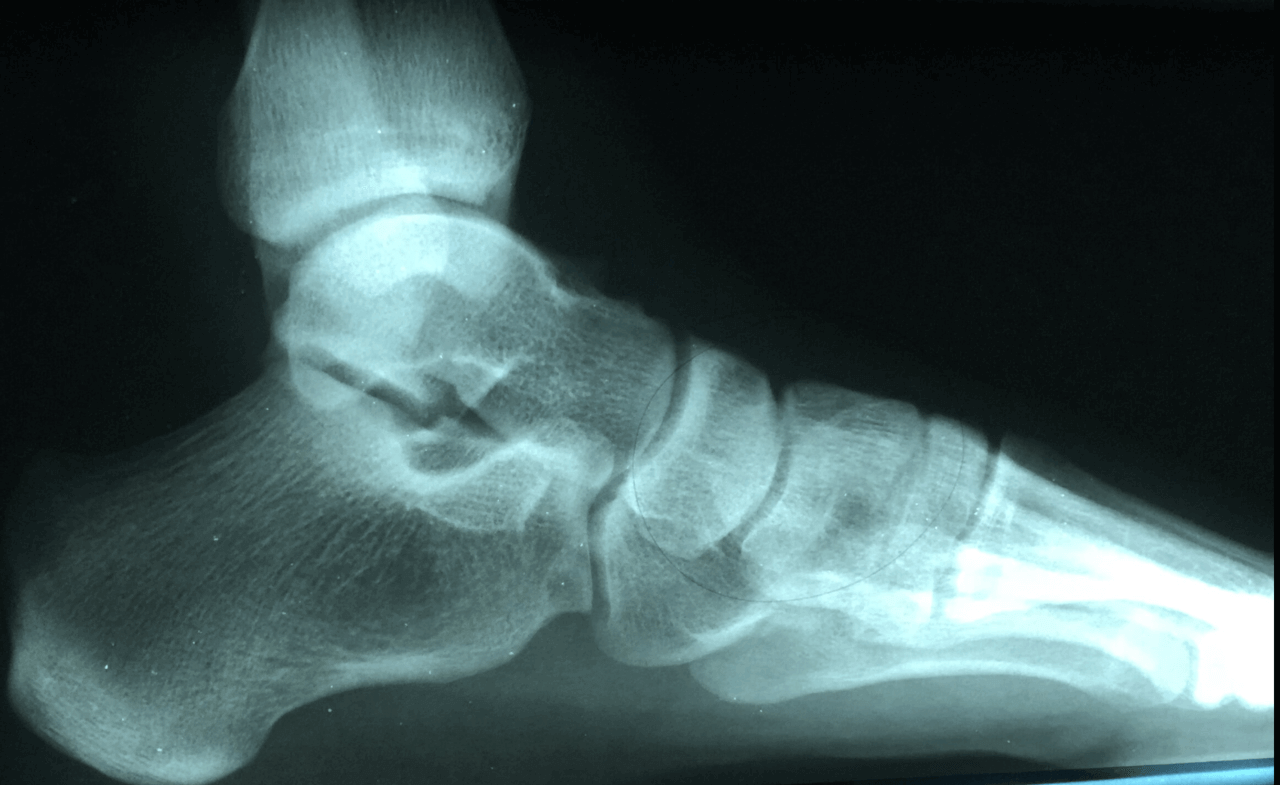
There are quite a few causes of heel pain of heel pain and it can vary by age. We tend to break it up by pediatric meaning anybody less than 18 and adult heel pain anybody over 18. Regardless of the age and the patient heel pain can be extremely challenging and very painful. We see quite a few adults and children that are highly athletic and struggling with resolving their heel pain.
Heel pain and children is typically sourced to a disorder called calcaneal apophysitis. This is a condition where the growth plate of the heel is affected. Often times with young man this occurs between the ages of 14 and 16 and for young limited between the ages of 12 and 14. We see a high correlation with sport activities especially cleated sports. It is important to have an x-ray and follow-up with the foot and ankle physician in order to evaluate the other underlying causes.
Adults tend to have pain that occurs in the morning especially when getting out of bed or after activities. We see the majority of people have often increased their exercise routine or started a new activity. The #1 cause of heel pain and adults remains plantar fasciitis. The plantar fascia is the main supporting network of the foot and can become tired and worn out with age. Again it is important to seek help from a foot and ankle physician to determine whether or not this is the underlying cause.
Heel pain in both pediatrics and adults is highly treatable and early intervention is better. The majority of these causes can be distinguished of the first visit and felt can be implemented immediately. If you’re having heel pain please make an appointment today and I can help.
Sincerely Dr. Brandon Nelson
Board-Certified Foot and Ankle Physician and SurgeonDr. Timothy Young, a Board Certified Foot Surgeon, Discusses How Doctors Diagnose Resistant Plantar Fasciitis
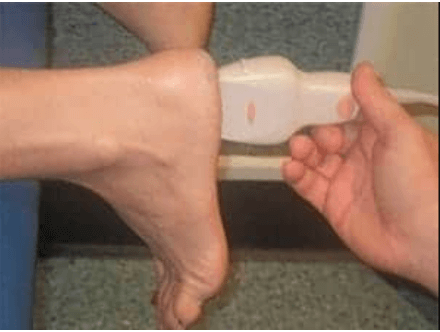
One of the essential tools for evaluation of heel pain is ultrasound high definition imaging. With this diagnostic tool, we can see if the planter fascia is excessively thickened and to what extent. For example typical thickness would be 3- 4 mm. But in severe cases it can be 7 mm or even up to 11 mm thick. This can be especially helpful when comparing to baseline or the non-symptomatic side.
In some cases there has been plantar fasciitis in the past on the non-symptomatic side or some individuals have plantar fasciitis affect on the both the right and left foot which does make baseline comparison a challenge. So when we see a severe case of plantar fasciitis with severe thickening of the fascia then we know it will be even more resistant than typical. That means that we have to consider some some of the treatment options for resisting cases such as shockwave therapy or PRP. We still have to do all of the other traditional treatments for plantar fasciitis.
Give us a call at 425-391-8666 or make an appointment online today.
Dr Brandon Nelson, A Board Certified Physician & Surgeon, Discusses Surgery For Heel Pain/Plantar Fasciitis

With heel pain affecting so many Americans, surgery is a common question I receive in the office. Most people that are curious about surgery have suffered from heel pain for months or even years and have tried all the conservative measures. They have tried things like orthotics, injections, splints, physical therapy and are still having pain. The discussion of surgery is an appropriate next step but at my office we have a few options that most physicians do not offer.
Surgery for heel pain or plantar fasciitis is highly successful and there are a few different procedures, but all have similar results. Many of the surgeries involve cutting or releasing the fascia and stimulating the biology of the body. The stimulating of the biology is important as it will increase blood supply and help with healing. Another procedure that has been in the current research is a gastric recession. This is where you lengthen a fascial type of structure in a patients leg to help reduce the pull of the Achilles tendon. Lately this has received a lot of attention and is showing very promising results.
I think a discussion on biology is important for this blog as well. Part of the long-term problem is chronically inflamed tissues. One’s fascia becomes chronically irritated and if you change the biology, you can usually fix the problem. I have developed a protocol and technique that is non-surgical that helps to stimulate your bodies own natural healing techniques and fixes most of the plantar fasciitis permanently. If you are suffering from heel pain I can help make and appointment today. Give us a call today at 425-391-8666 or make an appointment online.
Dr Brandon Nelson, A Board Certified Physician and Surgeon, Discusses the Best Long Term Treatment for Plantar Fasciitis
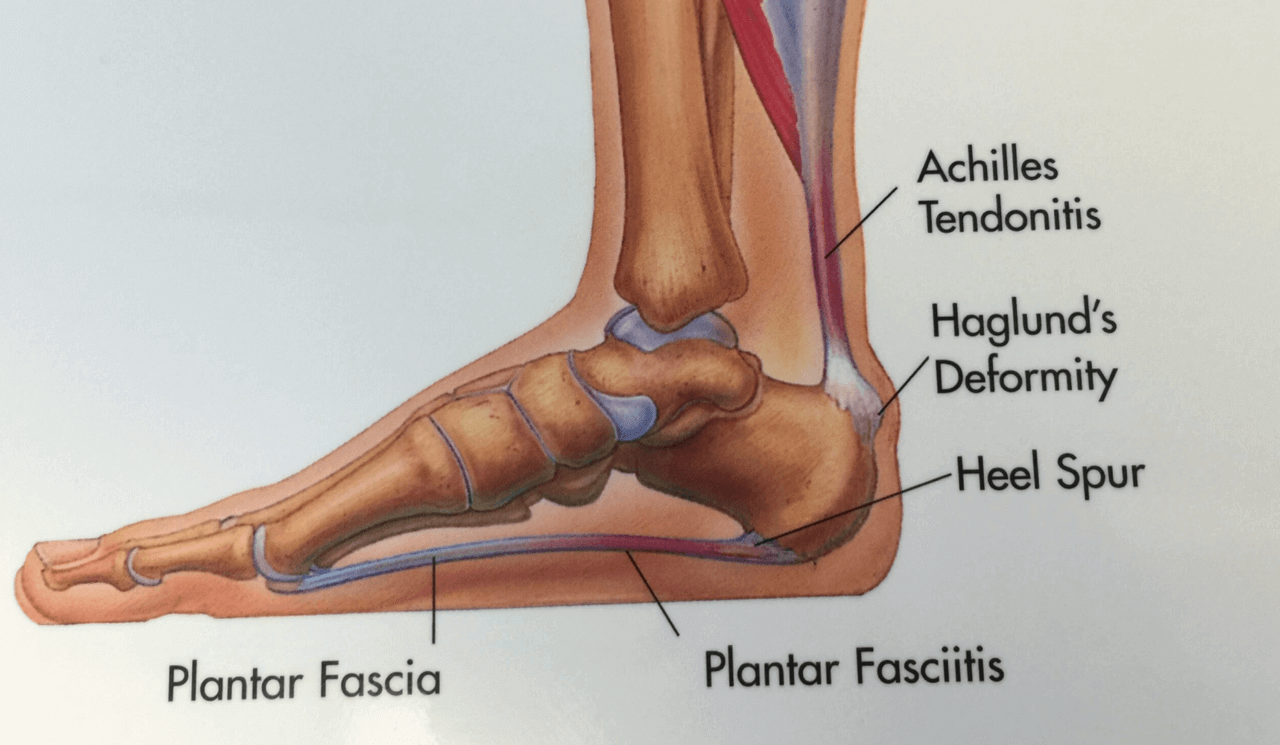
Plantar fasciitis continues to be the most common source of heel pain. The majority of our heel pain patients are still presenting with fasciitis. Patients usually feel pain in the morning or after sitting for a short period of time. The symptoms can range from burning and tingling in the heel to a bruised like sensation when walking. There does not need to be any history of trauma or even an increase in exercise. The major causes continue to be anatomical and foot structure related.
I can tell you I have been treating plantar fasciitis now for almost 15 years. I would say a conservative estimate is probably close to 10,000 patients that I have treated for heel pain. I have learned a lot with this time and quantity. I continue to read and learn and study each patient. This has provided me with a unique perspective. I would say I am probably one of the foremost experts on heel pain.
The best long-term treatment to date that I have discovered is utilizing one’s own biology to heel the plantar fasciitis. This condition is created when the fascia is overworked and needs to be strengthened structurally and functionally. The technique I utilize is unique to my practice and has taken years to perfect. Basically I harness a patient’s natural ability to heal and utilize that to repair the fascia. There is no down time, and the success rate is close to 97%. If you suffer from fasciitis make an appointment today and I will help.
Give us a call at 425-391-8666 or make an appointment online today.
Tenex Procedure for Plantar Fasciitis, Dr Brandon Nelson a Board Certified Physician and Surgeon
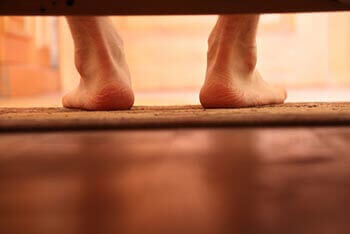
Despite all the available conservative options available for plantar fasciitis some patients do still require surgery. There are many different surgical procedures to address chronic plantar fasciitis. This includes the traditional open fasciotomy, the endoscopic fasciotomy, Topaz procedure and the Tenex procedure. The Tenex procedure is relatively new and has showed promising results with minimally invasive technology.
Tenex, is basically a small tool that you insert in the fascia that removes tiny pieces of the fascia. It is inserted multiple times via a very small incision and safely removes some of the diseased fascia and stimulates new fascial growth. The procedure itself can be done in less than 10 minutes and does not require anesthesia. A little bit of numbing medication can be injected around the fascia and then the procedure can be performed. Patients are required to wear a walking boot for about 3 weeks.
The initial results are very promising, and patients experience no pain after the procedure. I have seen very little swelling or bruising after the procedure and patients have been extremely satisfied with the recovery course and reduction of plantar fascial pain. I believe this procedure will change the open approach for a lot of surgeons and is demonstrating incredible results. If you are suffering from plantar fasciitis we can help.
Give us a call today at 425-391-8666 or make an appointment online today.
Dr Brandon Nelson, A Board Certified Physician, Discusses Morning Heel Pain
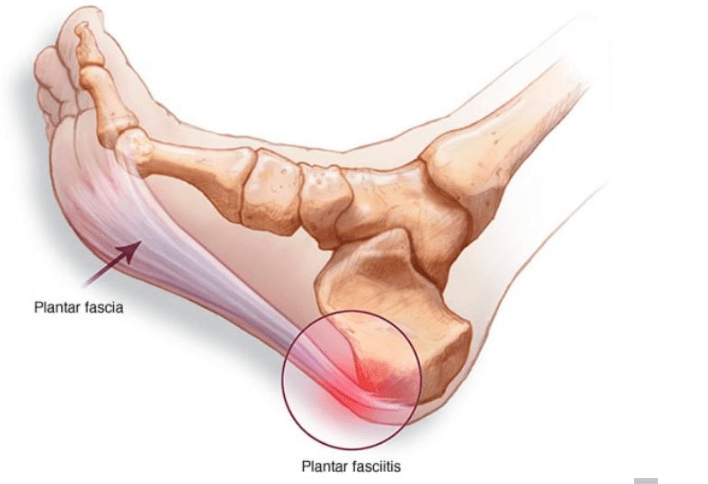
Moring heel pain is extremely painful and can cause quite a disruption to your daily routine. It is not only uncomfortable but also can become emotional upsetting to start one’s day with pain. It is estimated that about 60-70% of adults will experience this at some point in their life and it can last months without treatment.
The pain is one’s heel is usually related to inflammation of your plantar fascia. Your plantar fascia provides structural support to your foot and is activated when you walk. It runs the entire length of your foot and starts at your heel and continues to your toes.
Treatment of morning pain usually starts with stretching and icing. I recommend using a theraband or a belt to stretch before you get out of bed. Massage is another option and icing can provide help with the inflammation. It is important to consult a physician before beginning your treatment as not all heel pain is plantar fasciitis.
Dr Brandon Nelson, A Board Certified Surgeon, Discusses How To Get Rid Of That Morning Foot Pain

It is common for patients to come in the office and relate pain in the morning or right when they get out of bed. This can be a challenging way to start your day and can lead to chronic foot pain. Most patients describe the pain as a bruised feeling to the heel or a tightness with pins and needles. This can go on for months and become chronic. The most common cause of this type of pain is Plantar Fasciitis. Plantar Fasciitis is an inflammation of a supporting band of tissue on the bottom of the foot. The Plantar Fascia is essential for normal foot function and when it is inflamed daily tasks can be overwhelming.
Morning pain is one of the most common signs of Plantar Fasciitis. The reason behind this is while you sleep your Fascia and Achilles Tendon have a chance to relax. With this relaxation both structures begin to tighten up. This tightening up leads to stiffness when you first step on your foot. One can really help this by exercising their foot before getting out of bed. I recommend writing the alphabet with your foot and stretching with a theraband.
If your pain continues for more than a week an appointment is essential. Give us a call at 425-391-8666 or make an appointment online today.
Dr. Young Discusses Shockwave Therapy Treatment for Plantar Fasciitis
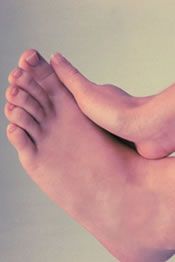
The shockwave therapy is part of what we call regenerative medicine. Typically, 5 treatments of shockwave are done at weekly intervals. This actually helps the damaged tissue and fascia heal rather than just masking the problem. There are a number of pathways with this treatment works including improving the local blood flow to the damaged plantar fascia. The treatment also activates the local It is always critical to continue the other mechanical and supportive measures (Prescription orthotics night splint hoka shoes).
The majority of patients do very well with this protocol. A small number of patients will need an additional limited series of (3) additional shockwave treatments 4–6 months later into the treatment plan.
If for any reason there is not dramatic and 90% plus improvement then an MRI evaluation is recommended.
Give us a call at 425-391-8666 or make an appointment online today.
Shockwave (EPAT): An Extremely Effective Technique To Get Rid Of Plantar Fasciitis

If you have had plantar fasciitis you know how frustrating it can be to your everyday life. Often you wake up and have pain with your first step, and then it returns again at the end of the day or every time you sit down. You have been icing and stretching and talking to all your friends and still are not getting better.
Why, why will this heel pain not go away? The number one cause of plantar fasciitis or heel pain is overuse. The overuse begins to wear down the fibers of your plantar fascia and they become fragile and often tear. Most patients with heel pain that will not go away have microscopic tearing.
Well how do you fix this tearing? One of the most advanced and effective treatment options is shockwave therapy. It has no downtime, no anesthesia, is non-innvassive, no scarring and is fast and effective in healing the torn fascia. This is a great option for active or athletic patients. The best shockwave avaible is the EPAT or Extracorporeal Pulse Activation Technology by CuraMedix. There are a lot of other types out there but this has the best results and the most long term data. If you want to heal your fasciitis fast and with no down time this is the device.
How it works? We typically employ 5 sessions all about 1 week apart. Each session takes about 10 minutes and is pain free and can be done in the office. The shockwave, EPAT, stimulates your bodies own healing cascade to recruit new cells and a new blood supply to heal your fascia. It is so effective that most professional sports teams have a unit to treat their athletes. If you are suffering from heal pain and want to get rid of it once and for all schedule and appointment with us today. Give us a call today at 425-391-8666 or make an appointment online today.



